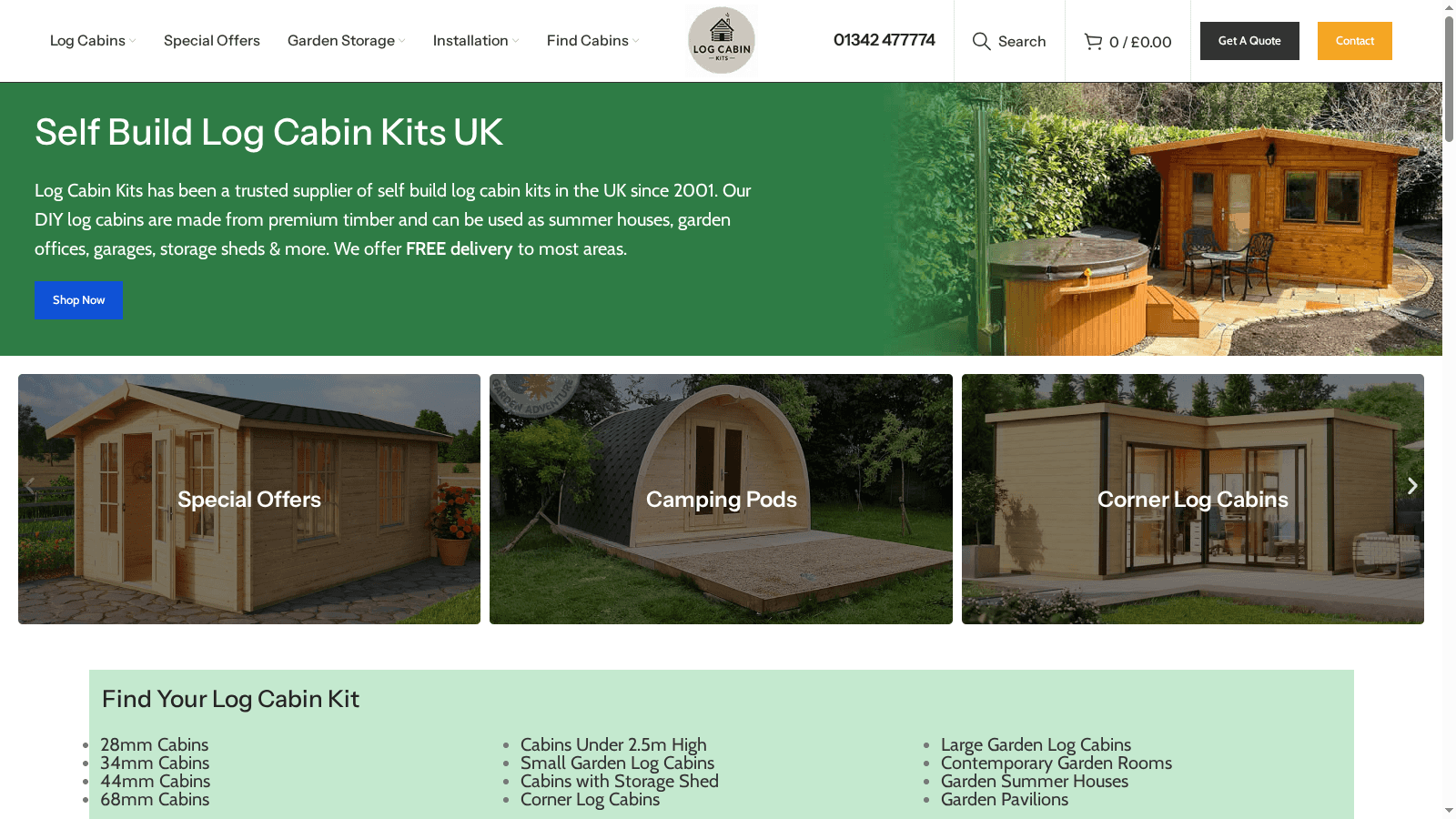Insulated Garden Rooms Explained: Complete UK Guide

More than a third of UK homeowners are looking for ways to increase usable living space without the hassle of a full extension. As family needs change and remote work rises, insulated garden rooms have become a smart solution for all-year comfort and endless possibilities. Whether you crave a quiet office, personal gym, or creative studio, understanding these modern outdoor spaces helps you make the most of your garden and your investment.
Table of Contents
- What Are Insulated Garden Rooms?
- Popular Types of Insulated Garden Rooms
- How Insulation Works in Garden Rooms
- UK Building Regulations and Planning Rules
- Cost Factors and Installation Process
- Common Mistakes to Avoid in the UK
Key Takeaways
| Point | Details |
|---|---|
| Thermal Efficiency | Insulated garden rooms provide superior thermal performance, allowing for year-round comfort through advanced insulation materials. |
| Versatile Usage | They can serve multiple functions, including home offices, creative studios, fitness areas, or leisure rooms, adapting to different homeowner needs. |
| Planning Regulations | Homeowners should be aware of UK building regulations and permitted development rights to avoid legal issues when installing garden rooms. |
| Cost Considerations | The total cost of garden rooms varies significantly based on materials, size, and additional features, requiring careful budgeting and planning. |
What Are Insulated Garden Rooms?
Insulated garden rooms represent a modern, versatile solution for homeowners seeking additional functional space that remains comfortable throughout the year. According to ehbp.com, these standalone buildings are specifically designed to retain heat and provide an adaptable environment, making them perfect for multiple uses like home offices, gyms, studios, or relaxation spaces.
The core feature of these garden rooms is their superior thermal performance. Thermal insulation transforms these structures from simple outdoor buildings into year-round living spaces. Constructed using advanced materials like French oak beams, they offer exceptional heat retention capabilities. Double-glazed windows further enhance their thermal efficiency, ensuring you can enjoy your garden room during chilly winters and cool summer evenings.
Key characteristics of insulated garden rooms include:
- Permanent standalone structures
- Custom design options
- Superior heat retention
- Multi-functional usage potential
- Adaptable to various garden sizes and styles
By integrating high-quality insulation materials and intelligent design principles, these garden rooms provide a seamless extension of your living space. Whether you’re seeking a quiet workspace, a creative studio, or simply a tranquil retreat, an insulated garden room offers the perfect solution. Learn more about year-round garden cabin comfort in our comprehensive guide.
Popular Types of Insulated Garden Rooms
Insulated garden rooms come in a diverse range of styles to suit different homeowner needs and garden aesthetics. From our comprehensive guide on garden offices, we’ve identified several popular configurations that offer both functionality and visual appeal.
Home Office Garden Rooms
These professional spaces are designed specifically for remote workers and entrepreneurs. Typically featuring sleek, modern designs with large windows, they provide a dedicated workspace that separates professional activities from home life. Soundproofing and high-speed internet connectivity are often key considerations for these structures.

Creative Studio Garden Rooms
Artists, musicians, and crafters love these specialized garden rooms. They offer natural light, inspiring views, and a sense of separation from household distractions. Customizable acoustic treatments and flexible interior layouts make these rooms perfect for creative pursuits.
Fitness and Wellness Rooms
Garden rooms transformed into personal gyms or wellness spaces are increasingly popular. These insulated rooms can accommodate exercise equipment, yoga mats, and even small meditation areas. Proper ventilation and robust flooring are crucial design elements.
Multipurpose Leisure Rooms
Versatility is the hallmark of these garden rooms. They can seamlessly transition between a home cinema, games room, or relaxation space. Modular furniture and adaptable lighting systems help maximize their functionality.
Key Considerations When Choosing a Garden Room Type
- Intended primary use
- Available garden space
- Budget constraints
- Personal aesthetic preferences
- Required technical specifications
Whether you’re seeking a productive workspace or a tranquil retreat, there’s an insulated garden room design perfectly suited to your lifestyle. Learn more about enhancing your garden log cabin’s climate control to ensure year-round comfort and usability.
How Insulation Works in Garden Rooms
Understanding how insulation functions in garden rooms is crucial for creating a comfortable, energy-efficient space that can be used year-round. According to Williams Windows, garden rooms achieve exceptional thermal performance through a sophisticated combination of advanced materials and strategic design techniques.
Structural Insulated Panel (SIP) Technology
Structural Insulated Panels form the backbone of modern garden room insulation. These prefabricated panels are engineered with a core of high-density foam sandwiched between two rigid structural boards, creating an incredibly efficient thermal barrier. Unlike traditional building methods, SIPs provide continuous insulation with minimal thermal bridging, which means less heat escape and more consistent indoor temperatures.
Window and Door Insulation
High-performance windows and doors play a critical role in maintaining thermal efficiency. A-rated double-glazing with advanced sealing techniques prevents heat loss and reduces external noise. Key features include:
- Low-emissivity glass coatings
- Argon gas-filled double glazing
- Precision-engineered window seals
- Thermally broken window frames
Thermal Performance Strategies
Effective garden room insulation involves multiple layers of protection. Techniques include:
- Multilayered wall construction
- Reflective insulation materials
- Comprehensive draft prevention
- Strategic air circulation design
Learn more about minimising drafts in your garden cabin to further enhance your room’s thermal efficiency. By understanding and implementing these insulation principles, you can create a comfortable, energy-efficient space that adapts to seasonal temperature variations.
UK Building Regulations and Planning Rules
According to Living Etc, navigating building regulations and planning rules for garden rooms in the UK can be complex but manageable. Most garden rooms fall under permitted development rights, which means homeowners can often proceed without full planning permission if specific conditions are met.
Key Permitted Development Conditions
For garden rooms to qualify under permitted development, they must adhere to strict guidelines:
- Maximum height of 2.5m if located near a property boundary
- Cannot be used as a habitable living space
- Must not exceed 50% of the total garden area
- Located to the rear of the property
- Constructed using standard building materials
When Planning Permission is Required
Some scenarios automatically trigger the need for a full planning application:
- Proposed garden room in Conservation Areas
- Intended use as a permanent residential space
- Exceeding size or height restrictions
- Front garden or street-facing location
- Listed building or heritage site constraints
Building Regulation Compliance
Regardless of planning permission status, garden rooms must still meet building regulation standards for:
- Structural integrity
- Electrical installations
- Thermal efficiency
- Fire safety
- Accessibility
Check our comprehensive guide on building regulations compliance to ensure your garden room meets all necessary legal requirements. Always consult local planning authorities for specific guidance tailored to your property and location.

Cost Factors and Installation Process
According to Ideal Home, the cost of an insulated garden room can vary dramatically, ranging from budget-friendly options to premium bespoke installations. Garden room pricing depends on multiple interconnected factors that homeowners should carefully consider before making an investment.
Price Range Breakdown
Garden room costs can be categorized into several tiers:
- Entry-level wooden summerhouses: £600 – £900
- Mid-range insulated garden rooms: £10,000 – £25,000
- Premium bespoke garden rooms: £25,000 – £50,000+
Key Cost Influencing Factors
Multiple elements contribute to the overall price of a garden room installation:
- Size and square footage
- Construction materials
- Insulation quality
- Electrical and utility installations
- Interior finishing complexity
- Site preparation requirements
Installation Process Stages
A typical garden room installation involves several critical stages:
- Initial site survey and ground preparation
- Foundation work and levelling
- Structural framework construction
- Insulation and weatherproofing
- Interior and exterior finishing
- Utility connections
- Final inspection and sign-off
Additional Expense Considerations
Homeowners should budget for often-overlooked expenses such as:
- VAT
- Potential planning permission fees
- Groundwork and site preparation
- Electrical and data connectivity
- Ongoing maintenance
Explore our comprehensive guide on building regulations compliance to understand potential hidden costs and regulatory requirements that might impact your garden room project.
Common Mistakes to Avoid in the UK
According to Living Etc, one of the most critical errors homeowners make is assuming that all garden rooms automatically qualify under permitted development rights. Navigating the complex landscape of UK planning regulations requires careful research and local authority consultation.
Planning and Legal Pitfalls
Common mistakes that can derail your garden room project include:
- Ignoring local conservation area restrictions
- Assuming universal permitted development rights
- Failing to check boundary regulations
- Overlooking height and size limitations
- Neglecting potential neighbour objections
Structural and Design Mistakes
According to Ideal Home, underestimating the importance of a robust foundation is a significant error. Key structural considerations include:
- Inadequate ground preparation
- Poor drainage planning
- Insufficient insulation
- Weak structural integrity
- Overlooking future maintenance needs
Financial and Budget Errors
Costly mistakes in garden room planning often involve:
- Underestimating total project costs
- Neglecting utility connection expenses
- Skimping on quality materials
- Failing to budget for unexpected challenges
- Ignoring potential long-term maintenance costs
Design and Functionality Missteps
Avoid these common design oversights:
- Inadequate natural lighting
- Poor interior layout planning
- Neglecting electrical and tech infrastructure
- Insufficient ventilation
- Lack of future-proofing capabilities
Check our comprehensive guide on building regulations compliance to prevent potential legal and structural complications in your garden room project.
Discover Your Perfect Insulated Garden Room Solution Today
If you are looking to create a cosy, year-round garden room that meets UK building regulations and matches your lifestyle, we understand the challenges you face. From choosing the right thermal insulation and ensuring proper planning permission to avoiding costly mistakes, the journey to building your ideal garden room can feel overwhelming. At Log Cabin Kits, we offer bespoke and custom garden buildings designed to tackle these exact concerns with quality materials and expert guidance.

Ready to transform your garden into a comfortable, multi-functional space that works all year long Take the first step by exploring our range of premium insulated garden rooms crafted for performance and style. Learn more about enhancing your garden cabin’s climate control and building regulation requirements with our helpful resources on the site. Visit Log Cabin Kits now to get started on your dream garden room before the next season arrives.
Frequently Asked Questions
Insulated garden rooms can be used for a variety of purposes, including home offices, creative studios, gyms, and relaxation spaces. They provide comfortable environments year-round, making them versatile additions to your home.
Insulation in garden rooms primarily uses Structural Insulated Panels (SIPs) that create an effective thermal barrier. This specialized insulation helps retain heat, while high-performance windows and doors enhance thermal efficiency and prevent heat loss.
Most insulated garden rooms fall under permitted development rights, allowing homeowners to construct them without full planning permission, provided they meet specific guidelines. However, activities such as using them as permanent residential spaces or exceeding size restrictions may require planning permission.
The cost of insulated garden rooms can vary based on size, construction materials, insulation quality, and additional features like electrical installations and interior finishing. Homeowners should budget for potential additional costs, such as planning fees and site preparation.
